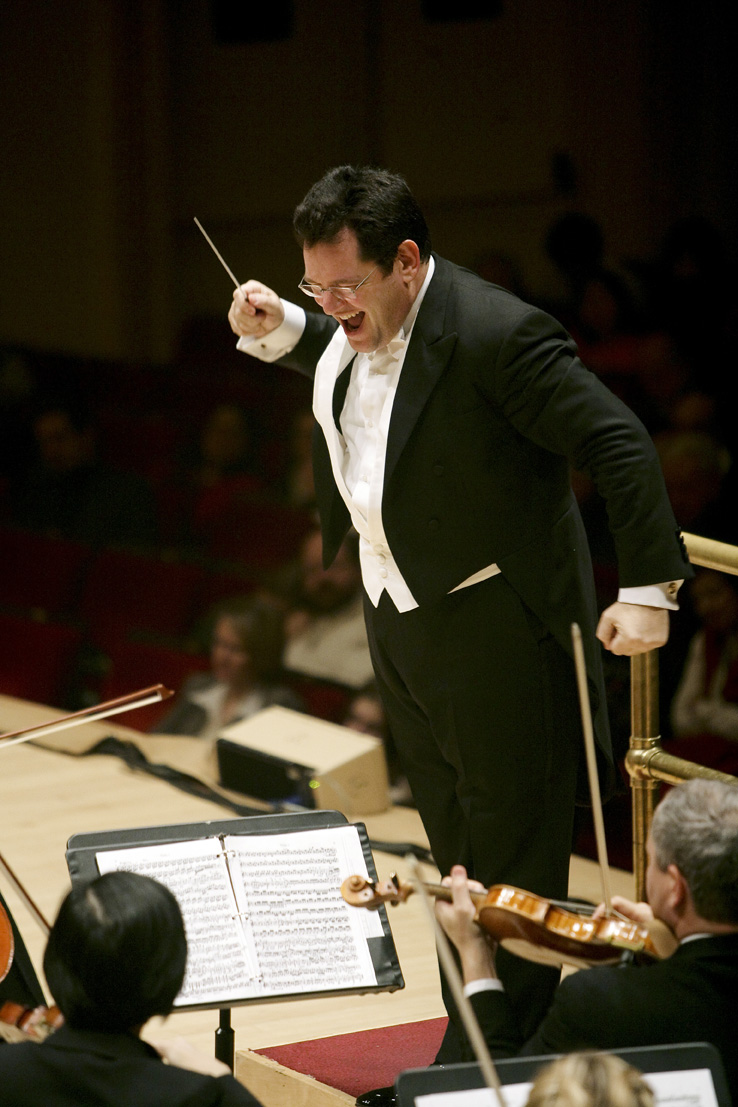The Park Avenue Chamber Symphony in Review
The Park Avenue Chamber Symphony in Review David Bernard, Music Director and Conductor Ted Rosenthal, Piano Bernstein, Beethoven, Rosenthal (World Premiere), and Gershwin All Saints Church; New York, NY May 15, 2011
The Park Avenue Chamber Symphony’s performance of Beethoven’s Eighth Symphony was captivating throughout; the clarity of rhythm and the musical conviction of the players were superb in what was a sparkling account. Music Director and Conductor David Bernard made the most of Beethoven’s melodic material by emphasizing the shape of the musical line, and Beethoven’s trademark sforzandos (heavy accents) were punctuated with tremendous vigor. All dynamics were presented with great contrast, but Bernard also brought out the nuanced, Haydnesque elements in the music: the humor, the grace, the lightness of touch in the orchestration, and he emphasized the Viennese dance music that permeates the score.
Bernstein’s “Candide Overture” was given a vibrant account, as this tricky piece–with all its contrapuntal elements–was appropriately feisty and comical. In Ted Rosenthal’s “Jazz Fantasy” for Piano and Orchestra (world premiere), the soloist, Rosenthal himself–who is better known as a jazz pianist–played the improvised sections with panache and enthusiasm. When he was playing the written-out parts, he seemed a bit stifled–which is odd because he composed the piece himself. Then again, Rachmaninoff was not always at home when he played his own music. In the “Jazz Fantasy,” Bernard was–despite all the difficulties of a new piece–relaxed and precise. The cello section had some difficulties with intonation and ensemble, but the violins and woodwinds were accurate and had a nicely blended sound–although not always audible. When they were heard, the solo flute and clarinet were wonderful. The brass section was sometimes excessively loud or unreliable; the trumpet soloist, for example, made a noticeable fumble at the very opening of the piece. On a side note, there was a cute moment when the jazz drum set player glanced over in the direction of the classical percussionists, with a thinly veiled look of disapproval as they played a rather bland, orchestrated version of a Latin clavé rhythm. A few moments later, the clavé motif shifted to the drum set player, who played it with a natural affinity, and had a slightly smug look on his face as he did.
The “Jazz Fantasy” certainly had overtones of “Rhapsody in Blue,” although it pales in comparison to Gershwin’s masterpiece. (What wouldn’t?) It seemed to be a big crowd pleaser anyway; both Mr. Rosenthal’s piece and “Rhapsody in Blue” received standing ovations. In the Gershwin, the conductor and soloist communicated exceptionally well, the clarinetist played an excellent opening solo, and the strings seemed more secure and enthusiastic in this piece, without question due to the work’s familiarity. In the Gershwin, Rosenthal took many refreshing liberties in fantastic solo playing, adding some rather long improvised sections to the piano cadenzas. In a delicate scherzando passage near the end, Rosenthal and the orchestra were at odds rhythmically, but this appeared to be the fault of the first violinists, as their eyes were glued to their music here. Overall, “Rhapsody in Blue” was very moving, and in summation, this was an immensely enjoyable concert.
–Holly Nelson for New York Concert Review; New York, NY

